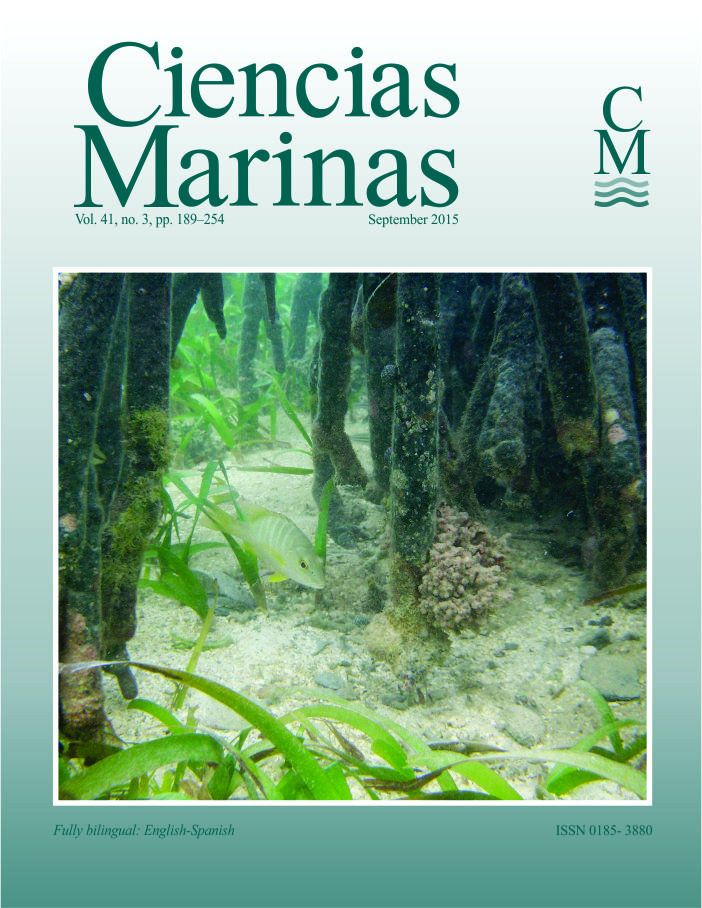Foraging habits of reef fishes associated with mangroves and seagrass beds in a Caribbean lagoon: A stable isotope approach
Main Article Content
Abstract
Mangroves and seagrass beds represent suitable fish habitats as nurseries or feeding areas. This study was conducted in a Caribbean lagoon to assess the foraging habits of juvenile transient reef fishes in these two habitats. Twelve fish species were sampled in coastal mangroves, an offshore mangrove islet, and a seagrass bed site, and stable isotope analyses were performed on fishes and their prey items. The SIAR mixing model indicated that transient fishes from both mangroves and seagrass beds derived most of their food from seagrass beds and their associated epiphytic community. Only a few species including planktivores (Harengula clupeola, Anchoa lyolepis) and carnivores (Centropomus undecimalis and small specimens of Ocyurus chrysurus) presented depleted carbon values, showing reliance on mangrove prey in their diets. Mangrove-derived organic matter contributed marginally to the diet of transient fishes, which relied more on seagrass food sources. Thus, mangroves seem to function more as refuge than feeding habitats for juvenile transient fishes.
Downloads
Article Details
This is an open access article distributed under a Creative Commons Attribution 4.0 License, which allows you to share and adapt the work, as long as you give appropriate credit to the original author(s) and the source, provide a link to the Creative Commons license, and indicate if changes were made. Figures, tables and other elements in the article are included in the article’s CC BY 4.0 license, unless otherwise indicated. The journal title is protected by copyrights and not subject to this license. Full license deed can be viewed here.

